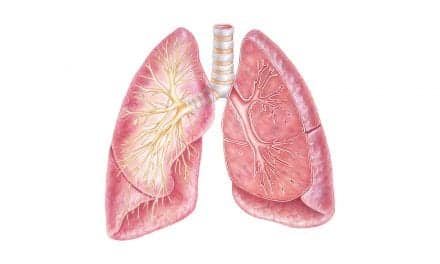Thoracic pain is highly prevalent in COPD patients and is related to impaired disease-specific health status, but there is no relationship with FEV1, static hyperinflation, dyspnea severity or functional exercise capacity, according to a study published in BMC Pulmonary Medicine.
Researchers studied 67 patients undergoing pulmonary rehab for COPD using plethysmography, spirometry and measurement of single breath diffusion capacity. Patients were assessed by 6-minute walking distance, COPD Assessment Test and Modified Medical Research Council Dyspnea Scale (mMRC) to assess functional exercise capacity, disease-specific health status and severity of dyspnea.
According to a Healio news article, 55 of 67 patients (82.1%) had chronic pain and 53.7% had thoracic pain, with CAT scores and younger age associated with thoracic pain (P = 0.01). However, the researchers found no association between factors such as forced expiratory volume in 1 second, static hyperinflation, severity of dyspnea and functional exercise capacity and thoracic pain, Healio reported.
“Thoracic pain proved to be very common and correlated with more severely impaired disease-specific health status. In order to optimally treat symptoms and improve disease-specific health status, awareness about the high prevalence of thoracic pain and its clinical impact must be increased among (respiratory) physicians. Assessment of thoracic pain should be integrated in COPD management programmes, including PR. Future studies should explore the mechanisms underlying thoracic pain in COPD,” researchers wrote.










